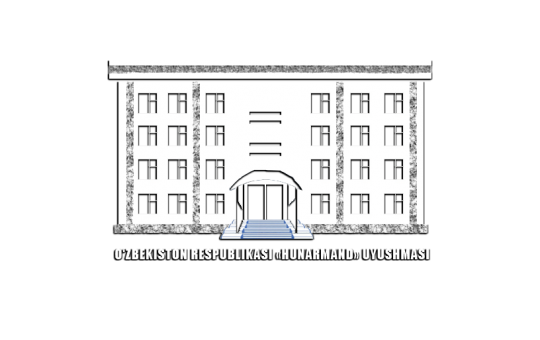A look at history
Craftsmanship emerged as a result of human production activities, gradually separated from agriculture and animal husbandry during the development of society, improved in connection with the development of technology within the framework of different socio-historical periods, various specialties (pottery, carpentry, blacksmithing, coppersmithing, construction, stonework, (carving, embroidery, tanning, tailoring, weaving, jewelry, tailoring, goldsmithing, painting, etc.) crafts depend on the availability of natural resources, for example, textiles in areas where cotton and cocoons are grown, in areas with high-quality raw materials (for example, in Rishton ) pottery, textile and tanning in many areas of wool and leather, smithing, woodworking in many areas of forests, metal production in areas rich in minerals, mining and blacksmithing, shipbuilding, etc. developed on the sea and river banks, accordingly, social development and labor 3 types of crafts have been formed in connection with the stages of distribution: 1) household crafts; 2) crafts that make products to order; 3) crafts that prepare products for the market.
Home crafts were the most common type of crafts in the Middle Ages. This type of handicraft is an integral part of natural economy. The development of cities is inextricably linked with the rapid growth of the production of handicrafts to order and the production of handicrafts for the market. As a result, craft products became commodities, goods were produced for exchange. With the demands of the times, new types of handicrafts were created. Artisans also began to specialize in the production of various products. Neighborhoods in cities were formed depending on the profession of craftsmen (for example, at the beginning of the 20th century in Tashkent, there were neighborhoods of tanners, potters, saddlers, crib makers, gunsmiths, and blacksmiths). Certain neighborhoods, quarters, cities, and regions began to gain fame with certain handicraft products.
Crafts became more and more involved in commodity-money relations. Uddaburon and busy artisans became owners of capital thanks to the initial accumulation of capital, and small factories and factories were created on the basis of their workshops. Crafts also contributed to the development of industry in European cities (weaving machines were improved, the appearance of blast furnaces in Germany in the middle of the 14th century led to serious changes in metallurgy. Capitalist production relations hit the further development of crafts, many branches of crafts were depressed. Due to the industrial revolution, rapid and cheap mass production of factory, factory products pushed handicraft products out of the market.
In developed countries, only handicraft industries (tailoring, shoemaking, carpet making, jewelry, carving, etc.) that produce individual orders and expensive art objects have survived.
At the beginning of the 20th century, with the widespread introduction of mechanized production, the variety and production volume of handicraft products decreased sharply. During the 20th century and the beginning of the 21st century, although large-scale industrial production settled down, the position of handicrafts remained. Craftsmanship has its own place in the market, which cannot be occupied by large-scale production due to its small segment, and the demand is individualized. The emergence of mini technology allows the individual and high-quality production of goods in crafts. This includes production and service of national headgear, national musical instruments, small equipment, and various souvenirs. Today’s crafts consist of individual labor activities and family businesses within small businesses.
The production of ceramics and textiles, which are considered the first important branches of handicrafts, appeared on the territory of Uzbekistan in the Neolithic period (Kaltaminor culture in the Khorezm oasis, Sopollitepa in Surkhondarya, etc.). Mil. av. From the 2nd century, the Great Silk Road became important in the trade of handicraft products. In the Middle Ages, the products produced in Eastern countries (steel in the Arab Caliphate, silk, porcelain, paper in Central Asia and India) were appreciated in European markets. In India, fine cotton cloth was created, in China, silk weaving looms appeared, and in China and Central Asia, the technology of making glass was improved.
In the 9th-10th centuries, large craft centers appeared in Central Asia. The production of yarn, carpets (Urganch, Shosh), silk (Marv), copper and iron weapons, knives (Fergana), silk fabrics, glass products (Bukhara) flourished. In the 13th century, the Mongol invasion hit the development of handicrafts. The emergence of the Timurid state had a very positive effect on the development of handicrafts.
All types of crafts in Central Asia were preserved until the 20s of the 20th century. Crafts played a major role in the production relations of cities such as Bukhara, Samarkand, Ko’kan, Khiva, and Tashkent (for example, in the 60s of the 19th century, 27 types of crafts developed in Khiva, there were 556 shops of craftsmen in the city bazaars, and in the 80s, the city had 2528 handicrafts. engaged).
Handicrafts in Uzbekistan are deeply specialized and combine various professions. For example, in the field of leather processing, tanners, shoemakers, leather workers, shoemakers, saddlers, saddlers, saddlers, furriers, belters; weavers, satin weavers, carpet weavers, rice weavers and felt weavers in the textile sector; in the field of metalworking, there were professions such as blacksmiths, shoemakers, coppersmiths, locksmiths, and jewelers. These defined the network structure of the craft.
As in Muslim workshops in the East, in Uzbekistan, women were engaged in needlework and embroidery while sitting at home. In the social structure of crafts, there were social categories such as master, apprentice and apprentice. The internal procedures and rules of the craft were determined by the “Pamphlets” as its charter. Each profession has its own guide, i.e. piri and “Rishola”, traditions and customs passed from generation to generation are observed. For example, before starting work, the master remembers his elder and asks him for help, and gives blessings to his student.
After Uzbekistan became a Russian colony, handicrafts lost their former status due to the competition of the monopoly industry, but many of its branches were preserved, because it produced goods that satisfied national needs, such as clothes, dishes, various household items, small labor. made weapons and delivered them to the local market. Abroad in ensuring the viability of crafts

